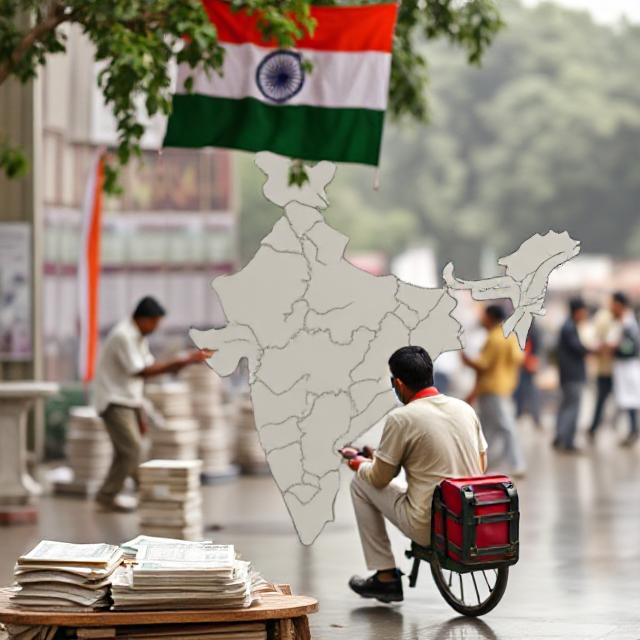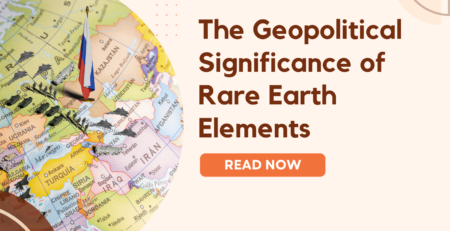India’s Global Positioning: Beyond Traditional Alliances
Introduction: The Diplomatic Tightrope
In the rapidly evolving landscape of international relations, India finds itself at the epicenter of a complex geopolitical matrix, skillfully navigating between competing global powers while maintaining its strategic autonomy. The nation’s approach to multipolarity in what many still perceive as a bipolar world dominated by US-China rivalry represents one of the most sophisticated diplomatic balancing acts of the 21st century.
The October 2024 India-China border patrol agreement, which restored patrolling rights in Depsang Plains and Demchok regions, exemplifies India’s pragmatic approach to regional stability, even as it faces mounting pressure from Washington regarding trade relations and alignment choices. This delicate equilibrium between maintaining strategic partnerships while preserving national interests defines India’s contemporary foreign policy paradigm.
The Trump Administration’s Trade Ultimatum: All-or-Nothing Diplomacy
The return of Donald Trump to the White House has introduced unprecedented volatility into US-India trade relations. Trump’s declaration of a national emergency with a 10% tariff on all countries, effective April 5, 2025, marked a dramatic shift from traditional diplomatic engagement to unilateral economic pressure tactics.
India faces significant tariff barriers with rates between 5-12.5% on industrial goods and a proposed 26% tariff on various Indian exports, creating substantial challenges for Indian exporters in the competitive US market. This aggressive tariff regime reflects Trump’s transactional approach to international relations, where diplomatic nuance is often sacrificed for immediate economic gains.
The characterization of any leader as willing to reject India’s “lower tariff barriers across sectors in an interim deal” in favor of imposing punitive tariffs demonstrates a fundamental misunderstanding of diplomatic processes. India’s trade-weighted average tariff of 12% compared to the US’s 2.2% has led Trump to repeatedly call India the “tariff king” and a “big abuser” of trade ties, setting the stage for confrontational rather than collaborative trade negotiations.
The Economics of Escalation
Despite disruptions caused by Trump’s tariffs, India is projected to maintain its GDP expansion of 6.3%-6.8% for financial year 2025-26, demonstrating the resilience of the Indian economy and its ability to adapt to external pressures. This economic robustness provides New Delhi with leverage in trade negotiations, allowing it to resist Washington’s demands for complete capitulation.
The Indian sectors most vulnerable to Trump tariffs include gems and jewelry, marine products, electronics, and auto parts, while textiles and apparel may benefit as China faces steeper 145% tariffs. This sectoral analysis reveals the complex interdependencies that make simplistic trade solutions ineffective.
The China Factor: From Confrontation to Calibrated Engagement
India’s relationship with China represents perhaps the most critical element in its multipolar strategy. The October 2024 border agreement marked a significant diplomatic breakthrough, with both sides pulling back troops from key flashpoint areas along the Himalayan frontier, though questions remain about the long-term implications for broader bilateral relations.
Strategic Calculations Behind the LAC Agreement
Under the current agreement, Indian and Chinese soldiers will return to patrolling along the LAC in the same manner as before border tensions erupted in May 2020. This return to status quo ante represents a tactical victory for Indian diplomacy, demonstrating that patient engagement can yield results even in the most challenging circumstances.
The agreement includes provisions for both countries to withdraw troops from specific areas of contention along the LAC, with structured patrolling arrangements intended to maintain the status quo and prevent unilateral changes. This framework establishes a foundation for managing future tensions while allowing both nations to focus on broader economic and strategic priorities.
Washington’s Perception of India-China Détente
The timing of the India-China border agreement has not gone unnoticed in Washington, where policymakers view any warming of relations between New Delhi and Beijing as potentially undermining the US Indo-Pacific strategy. This perspective reflects the zero-sum thinking that characterizes much of current American foreign policy, where any gain for China is perceived as a loss for the United States.
The threat of secondary Russian sanctions on both India and China represents an attempt to limit their strategic options and force alignment with US objectives. However, this approach fails to recognize the complex realities of Asian geopolitics, where historical relationships, geographic proximity, and economic interdependence create incentives for engagement that transcend ideological differences.
The BRICS Dimension: Multilateralism in Action
Trump’s threats of a 10% tariff on all BRICS members, including India, even as trade deal negotiations continue, highlight the contradictions in US policy. This approach of simultaneously threatening and negotiating reflects the chaotic nature of Trump’s diplomatic style, which prioritizes short-term tactical gains over long-term strategic relationships.
India’s participation in BRICS represents its commitment to multipolar institutions that provide alternatives to Western-dominated frameworks. The organization’s focus on economic cooperation, infrastructure development, and South-South collaboration aligns with India’s vision of a more equitable international order where emerging economies have greater voice and agency.
Navigating Competing Pressures
Reports of India offering zero tariffs to Trump, while reciprocal tariffs of 27% remain on hold until July, demonstrate the complex negotiations underway. This high-stakes diplomatic dance illustrates India’s willingness to make substantive concessions while maintaining red lines on issues of core national interest.
The challenge for Indian policymakers lies in satisfying American demands for greater market access while protecting domestic industries and maintaining strategic autonomy. Indian tariffs on US products are far higher than what the US imposes on Indian goods, and changing this won’t be easy for New Delhi, especially in agriculture, on which half the country’s population depends.
Strategic Autonomy: The Core of India’s Foreign Policy
India’s concept of strategic autonomy has evolved from the non-alignment principles of the Cold War era to a more sophisticated approach that allows for multiple partnerships without exclusive allegiances. This philosophy recognizes that in a multipolar world, rigid alignment with any single power limits options and reduces flexibility in responding to changing circumstances.
The Limits of Binary Thinking
The American expectation that India should choose sides in the US-China competition fundamentally misunderstands India’s strategic culture and historical experience. Having gained independence through non-violent resistance to imperial rule, India has consistently rejected attempts by external powers to dictate its foreign policy choices.
This resistance to binary thinking extends beyond US-China relations to encompass India’s approach to Russia, Europe, the Middle East, and Africa. By maintaining diverse partnerships across regions and ideological spectrums, India maximizes its strategic options while minimizing dependence on any single relationship.
Economic Diversification as Strategic Insurance
India’s trade relationships reflect its commitment to diversification as a hedge against political volatility. While the United States remains a crucial economic partner, India has simultaneously deepened ties with the European Union, Southeast Asia, the Gulf states, and emerging markets in Africa and Latin America.
This economic diversification provides political leverage by reducing vulnerability to pressure from any single partner. When Trump threatens punitive tariffs, India can point to alternative markets and partnerships that limit the effectiveness of such coercive measures.
The Indo-Pacific Paradox
The concept of the Indo-Pacific as a strategic framework presents both opportunities and challenges for India’s multipolar strategy. While the region’s emphasis on connectivity, maritime security, and economic integration aligns with Indian interests, the framework’s implicit anti-China orientation creates tensions with India’s broader diplomatic approach.
Balancing Competition and Cooperation
India’s participation in the Quad (with the US, Japan, and Australia) demonstrates its willingness to engage in strategic partnerships that enhance regional stability and prosperity. However, New Delhi has consistently avoided allowing the Quad to become an explicitly anti-China alliance, preferring to focus on positive agenda items like infrastructure development, climate action, and pandemic response.
This approach reflects India’s understanding that sustainable security in the Indo-Pacific requires some level of Chinese participation or at least acquiescence. Attempts to completely exclude or contain China are likely to increase tensions and reduce the prospects for regional cooperation.
Maritime Security and Economic Integration
The Indo-Pacific framework’s emphasis on freedom of navigation and open sea lanes resonates strongly with Indian strategic thinking, given the country’s dependence on maritime trade routes for energy imports and export markets. However, India recognizes that effective maritime security requires cooperation with all major regional powers, including China.
Similarly, economic integration initiatives like the Regional Comprehensive Economic Partnership (RCEP) and various bilateral trade agreements reflect India’s commitment to regional economic development, even when such agreements may not align perfectly with American preferences.
The Russia Factor: Testing Strategic Partnerships
India’s relationship with Russia represents perhaps the most challenging aspect of its multipolar balancing act, particularly in the context of Western sanctions following the Ukraine conflict. The threat of secondary sanctions on countries maintaining economic ties with Russia creates direct pressure on India to choose between strategic partnerships.
Energy Security and Defense Cooperation
India’s continued imports of Russian oil and ongoing defense cooperation reflect practical necessities rather than ideological alignment. With limited domestic energy production and a defense establishment built around Soviet and Russian equipment, sudden disengagement from Russia would create significant vulnerabilities.
The American demand that India sacrifice these vital relationships in support of Western sanctions fails to account for India’s unique strategic requirements and historical partnerships. Such demands also ignore the reality that abrupt changes in major power relationships can create instability that serves no one’s interests.
Diplomatic Innovation in Crisis Management
India’s approach to the Ukraine crisis demonstrates its capacity for diplomatic innovation in managing competing pressures. By maintaining dialogue with all parties while avoiding explicit support for any side’s military actions, India has preserved its relationships while contributing to humanitarian assistance and diplomatic efforts.
This balanced approach has drawn criticism from both Western and Russian sources, but it reflects India’s consistent position that complex international crises require nuanced responses rather than simplistic alignment choices.
Economic Dimensions of Multipolarity
India’s economic strategy in a multipolar world emphasizes diversification, innovation, and sustainable development. The country’s focus on digital transformation, renewable energy, and manufacturing competitiveness reflects recognition that economic strength provides the foundation for strategic autonomy.
The Digital Economy as Strategic Asset
India’s emergence as a global leader in digital services, fintech innovation, and information technology demonstrates the potential for developing countries to achieve comparative advantage in high-value sectors. This digital strength provides leverage in international negotiations while reducing dependence on traditional manufacturing and resource extraction.
The development of indigenous digital payment systems, data protection frameworks, and artificial intelligence capabilities reflects India’s determination to maintain technological sovereignty while participating in global digital networks.
Supply Chain Resilience and Manufacturing
The COVID-19 pandemic and subsequent supply chain disruptions highlighted the risks of excessive dependence on single-source suppliers, particularly China. India’s Production Linked Incentive (PLI) schemes and “Make in India” initiatives represent efforts to build resilient manufacturing capabilities that reduce strategic vulnerabilities.
These economic policies align with geopolitical objectives by providing alternatives to Chinese manufacturing while creating domestic employment and technological capabilities. However, success requires significant investment in infrastructure, education, and institutional capacity.
Climate Change and Global Governance
India’s approach to climate change negotiations demonstrates its commitment to multilateral solutions while protecting development interests. The country’s emphasis on “common but differentiated responsibilities” reflects the reality that developing countries face different constraints and priorities than their developed counterparts.
Energy Transition and Development Priorities
India’s ambitious renewable energy targets and commitments to net-zero emissions by 2070 demonstrate serious engagement with global climate objectives. However, the country continues to emphasize that energy transition must be compatible with poverty reduction and economic development goals.
This position resonates with other developing countries and provides India with leadership opportunities in South-South cooperation on climate issues. By articulating developing country perspectives in international forums, India strengthens its position as a voice for the Global South.
Technology Transfer and Climate Finance
India’s advocacy for technology transfer and climate finance reflects broader questions about global equity and responsibility for addressing climate change. These positions align with multipolar principles by challenging the dominance of developed countries in setting global agendas and priorities.
Future Trajectories: Challenges and Opportunities
Looking ahead, India’s multipolar strategy faces several key challenges and opportunities that will shape its evolution. The rise of new technologies, changing demographics, and shifting economic balances will create new dynamics that require adaptive responses.
Technological Competition and Cooperation
The intensifying competition between the United States and China in areas like artificial intelligence, quantum computing, and biotechnology creates both risks and opportunities for India. While excessive dependence on either Chinese or American technology platforms could create vulnerabilities, India’s growing technological capabilities provide opportunities for strategic partnerships with multiple players.
The development of indigenous capabilities in critical technologies while maintaining openness to international cooperation represents a key challenge for Indian policymakers. Success requires substantial investment in education, research, and innovation infrastructure.
Demographic Dividend and Human Capital
India’s young population represents a potential demographic dividend that could drive economic growth and global influence for decades. However, realizing this potential requires massive investments in education, healthcare, and job creation that will test the country’s institutional capacity.
The successful development of human capital could position India as a global leader in knowledge-intensive industries while providing the foundation for sustained economic growth. Failure to make necessary investments could result in social instability and reduced international competitiveness.
Regional Integration and Global Partnerships
India’s future influence will depend significantly on its ability to build effective partnerships with neighboring countries and regional organizations. The country’s historical challenges with Pakistan and complex relationships with smaller South Asian neighbors have limited regional integration efforts.
Progress in regional connectivity, trade facilitation, and dispute resolution could unlock significant economic and strategic benefits while strengthening India’s position in global affairs. However, such progress requires political will and sustained diplomatic effort.
Conclusion: The Art of Strategic Balance
India’s approach to multipolarity in an increasingly complex world demonstrates the continued relevance of strategic autonomy as a foreign policy principle. Rather than accepting the binary choice between American and Chinese spheres of influence, India has crafted a sophisticated strategy that maximizes options while minimizing risks.
The challenges facing this approach are significant. Trump’s transactional diplomacy, China’s growing assertiveness, and the pressures of global economic integration all test India’s ability to maintain strategic balance. However, the country’s growing economic strength, technological capabilities, and diplomatic experience provide solid foundations for navigating these challenges.
The success of India’s multipolar strategy ultimately depends on its ability to deliver tangible benefits for its population while contributing to global stability and prosperity. This requires continued investment in institutional capacity, economic development, and diplomatic innovation.
As the international system continues to evolve, India’s experience in managing competing pressures while maintaining strategic autonomy may provide valuable lessons for other middle powers seeking to maximize their influence in a multipolar world. The art of strategic balance, refined through decades of non-alignment and adapted to contemporary realities, remains a relevant and valuable approach to international relations.
The path forward requires careful navigation of trade tensions, border management, alliance relationships, and global governance challenges. Success will depend on India’s ability to maintain domestic consensus around its strategic objectives while adapting to changing international circumstances. In this complex endeavor, the principles of multipolarity, strategic autonomy, and inclusive development provide essential guidance for policymakers and citizens alike.












